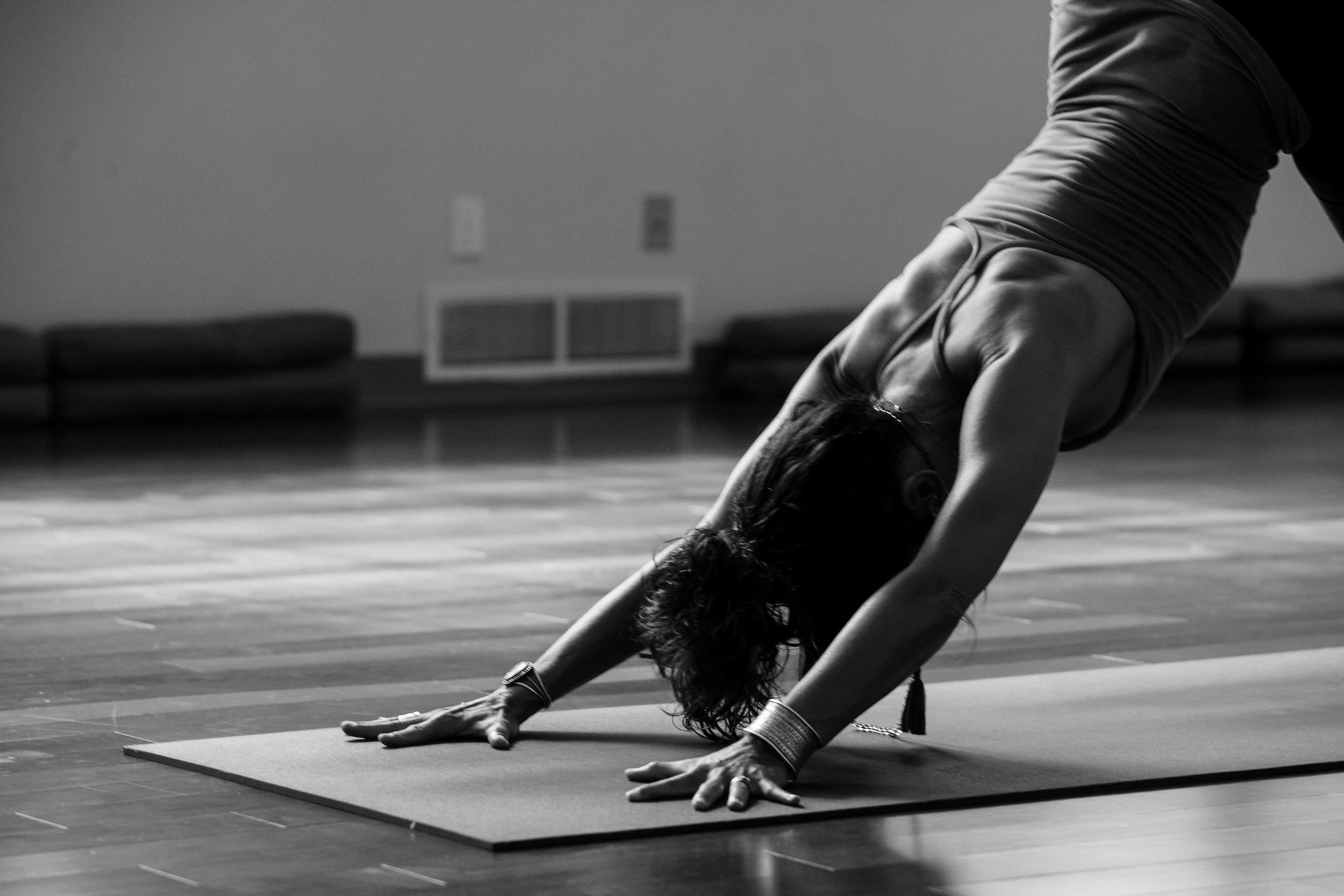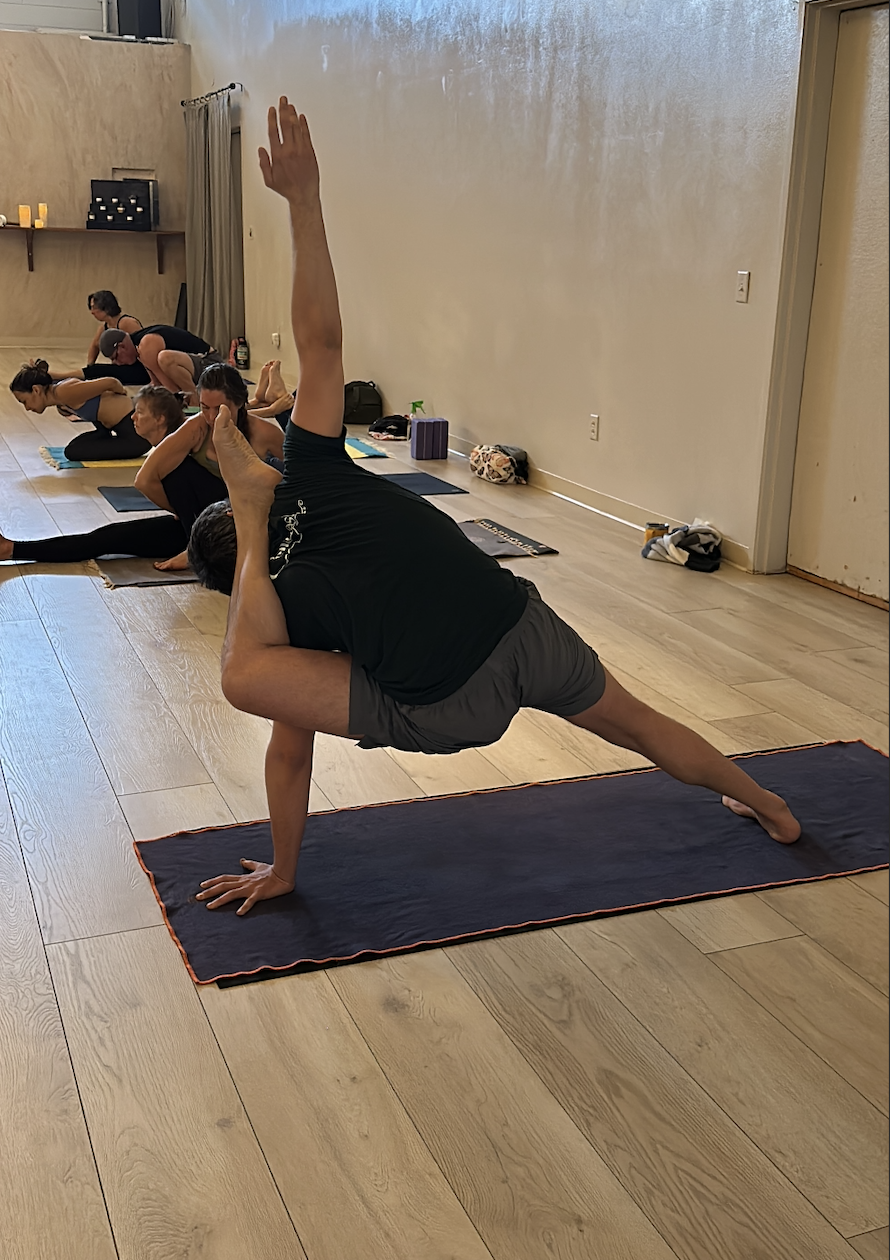Finding the heat when your yoga instructor doesn’t deliver
Most modern yogis have been here…
You've organized the logistics of your entire day; the scheduling, the child care, the dinner plans; all in favor of that most precious window of time wherein you will unroll your mat and be freed from the confines of your waking, walking existence. Free to move through the landscape of your asana journey, unencumbered by life's myriad demands; free to SWEAT, as if the beads of moisture pouring forth from your skin were the most sacred of prayers; were sanctified hymns to a oneness our minds are paid every day to forget, while our hearts resign to ache in it's constant remembrance. And we arrive, prepared to embark on this most blessed catharsis.
As we congregate our attention around the divine well of breath's primordial rhythm, as we begin to ripple through the serpent of the spine for our first few rounds of cat/cow, cat/cow, it becomes painfully clear: This instructor is not teaching power flow, and I wanted to SWEAT.
We are stifled by the depths of our disappointment; disoriented by the fiery points of reference upon which we thought we could rely, now nowhere to be found, and felt only as a devastating absence. We send desperate psychic messages to this dawdling instructor, begging them to invite us to embody more of the hare and less of the tortoise.
Yup. Most of us dedicated modern yogis have been here at one point or another. And I'm going to suggest something very disappointing about this familiar landmark in present day asana culture. Are you sitting down? Because this might sting a little bit...
When you are truly ready to embark on a more vigorous asana practice, then it will be available to you, with or without your teacher's invitation.
The kind of sustainable heat, the physical tapas, fostered by a yogic movement practice stems from a deep integration of the foundational principles of posture and study. The patience and discernment required to weather the incremental assimilation of such deep learning are as much a part of the yoga practice as the postures. The gradual ripening of the physical aspect of yoga is part of our unspoken initiation into more fiery flows and complex asana. This process mirrors the emergence of a mindset that cultivates a manner of alignment having more to do with the way in which we walk through our lives than how we bust out our baddha parivrtta ardha chandrasana in a spicy vinyasa class.
In other words, if you require your teacher to prescribe the physical heat or complexity you crave in your asana practice, then you are probably not quite ready for it. When you're ready, it's there for you no matter the circumstances; you will no longer need to call in the prescription because it lives full time in the medicine cabinet and is there for the taking.
But let's get practical for a moment: if and when you find yourself in that class, (you know, the one vaguely labeled "vinyasa" that you really thought was going to kick your butt so hard that your third eye would be flung wide open and you'd tumble ass over kettle into that realm which presents when the body begins to explore it's apex efforts), and you are feeling a bit bewildered about how to tend your own physical fire, here are some practical suggestions:
* Connect your breath impeccably to your movement.
Become tedious about ensuring that the length of your movement mirrors the length of your breath and then make certain that you are following your breath into each posture. For example, as you lower down from plank to chaturanga dandasana (or all the way to the floor), make sure that the lowering of your physical body ends at the same time that your outbreath expires, and do not begin your next shape until your inhale has initiated the movement. To truly, impeccably yoke our asana movement back to our breath cycle, facilitates a deep physical challenge, no matter the pace.
* Return to the foundations.
The difference between a mild shape and a truly challenging one is often found in the fundamentals. Cultivating the capacity to ignite the poses from within can build more heat than bringing our focus to what we think the shape should look like from the outside. For instance, in a high crescent lunge, rather than collapsing into the back leg and ankle in favor of a horizontal front thigh bone, press over the ball of your back foot until your heel hovers over your big toe, while firing up your back leg as if you were holding something heavy in pit of your hind knee. Foster that internal stability with your engagement, and then let the front thigh bone organize itself around that internal structure.
* Add a little somethin, stay a little longer.
If you need more spice in a vinyasa class and your teacher is not offering it, hold your chaturangas for a few extra breaths, then add a few pushups if you're still feeling saucy, without compromising your form. This last part is really important- because two impeccable chaturangas (remember, your elbows aren't wings but they aren’t shelves for your torso either), will build more heat and strength than thirty haphazard ones, without degrading your precious shoulders. This is true for most shapes; to do fewer of them well, with intention and structural integrity, is generally more effective at firing up and progressing our physical practice, than to do more of them with less attention to detail.
And remember, the most challenging practice is not always the one with the most physically demanding postures. To confront the chatter of our minds with stillness and a pinch of quiet, can be a far more formidable practice, than to meet those habitual mindsets with more movement and exaggerated notions of linearly measured value and progress.
So when we find ourselves in a class that is generating frustration around how much more we wanted to do during our precious, hard earned time on the mat, it's our willingness to expand the limitations of that mindset; to breath into those edges, with the same commitment we bring to breathing space into the limitations of the hamstrings in hanumanasana, that permit the practice of yoga to work its magic on us.
Shine on yogis,
Guest Contributor Austin Barry
Learn more about Austin on her website and book a yoga class at BODY.




